Maintain a Healthy BMI | Don't Ignore Pain
Sunshine is Bad—and Good for You | Eat Foods Rich in Calcium
Consume Foods High in Vitamin C | Eat Bananas and Root Vegetables
Increase Your Intake of High-fiber Foods | Don't Skip that Colonoscopy
Drink Decaffeinated Coffee | Don't Smoke! | Exercise Regularly
| There are a number of specific steps, some more obvious than others, that can be taken in order to lower your risk of developing cancer. Many of the recommendations described in this article are easily accomplished, while at least two—maintaining a healthy weight and quitting smoking—may be more difficult to achieve for many people. The bottom line for reducing your cancer risk (as well as the risk for any serious illness) is to use common sense: Eat a healthful balanced diet, exercise regularly, stay away from tobacco products, pay attention to what your body is telling you, get periodic medical checkups, and keep yourself informed. |
Maintain a Healthy BMI
|
It is well documented that being overweight or obese contributes to poor health, including increasing the risk for certain types of cancer. In fact, according to the American Cancer Society, of all the cancer deaths in the United States, the percentage of the cancer deaths attributed to being overweight or obese is 20% among women and 14% among men. This alarming statistic underscores the importance for maintaining a healthy BMI (Body Mass Index), which is a number related to height and weight that is used by health professionals, nutritionists, and some insurance companies to assess the risk that an individual may carry in developing health problems.
A person is considered overweight if he or she has a BMI score over 25. A score over 30 indicates that a person is obese. Of course, age, body shape, the ratio of fat to muscle, pregnancy, and an active or sedentary lifestyle are among the important considerations when making an accurate assessment of BMI and how it relates to overall health. (See the article "All About Body Mass Index" for much more on BMI.) |
Don't Ignore Pain
| Certain types of pain should not be dismissed as simply common aches and pains, especially if the pain continues to worsen and increases in frequency. Recurring gastrointestinal pain, pelvic and lower back pain, and frequent severe headaches are only some of the types of pain that may signal the possibility of cancer. Most often, pain that is not attributed to injury is the result of ordinary, non-lethal ailments such as upset stomach, muscular pain resulting from strain or overuse, and head pain resulting from eye strain or migraines; however, if the pain is becoming worse and increases in frequency, it is wise to consult a doctor so that an accurate assessment can be made of what is causing the pain. If the underlying cause of the pain is a serious disease such as cancer, ignoring the pain for a lengthy period will make the prognosis for a full recovery much less certain once the disease is diagnosed. |
Sunshine is Bad—and Good for You
|
Everyone knows that too much sunshine can be harmful to your health. We have all heard that repeated exposure to the sun can increase the risk of developing skin cancer, and that people with fair complexions are more susceptible than people with dark complexions; however, one beneficial aspect about sun exposure is not as well known: Cancer fighting vitamin D is produced in the body by small doses of sunshine. Exposure to the ultraviolet rays of the sun activates a form of cholesterol in the skin and converts it to vitamin D. Studies have concluded that as little as fifteen minutes of sun exposure a few times a week for a person with a light skin color is all that is necessary for vitamin D to be formed in the body, offering protection against colon cancer, breast cancer, and even certain types of lymphoma. The darker the skin pigmentation, the more sunlight is required to achieve the same result as a person with lightly colored skin.
Of course, there are some people who may have a difficult time receiving an adequate dose of sunlight: shut-ins, the disabled, and some nursing home residents are prime examples; therefore, it important that they get an adequate supply of vitamin D through a balanced diet and/or through the use of vitamin D supplements. A daily dose of 400 IU is usually a sufficient amount for most people, although higher doses are prescribed for some people based on various health conditions. (Mega doses of vitamin D can be harmful. In fact, when taken in excess, vitamin D is the most toxic vitamin.) Vitamin D rich foods include several types of fish, such as salmon, mackerel, and tuna; cod-liver oil; and foods that have been fortified with vitamin D, such as milk and orange juice.
|
|
Some of the Natural Sources of Vitamin D
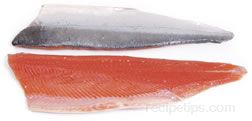 
Salmon and Tuna

Mackerel
|
|
Some of the Foods that are Fortified with Vitamin D
|
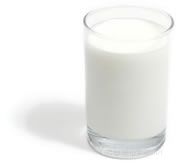 
|
|
| Fortified Milk and Fortified Orange Juice |
|
| People who eat a balanced diet and who receive an adequate dose of sunlight usually do not have to be concerned about getting enough vitamin D. The majority of us probably get too much sun exposure, ensuring the production of vitamin D but increasing the risk of skin cancer. Remember, for the majority of us who are exposed to sunlight for more than fifteen minutes at one time, sunscreen should always be used to protect ourselves from too much of a good thing. Wearing a wide-brimmed hat is also a good measure for blocking some of the sun's harmful rays. |
Eat Foods Rich in Calcium
|
It has been shown that people who have adequate amounts of calcium every day can cut their risk of developing precancerous polyps. One study indicated that the people in the study who had 1,200 mg. of calcium every day for four years had a reduction of 36% in the development of precancerous polyps compared to those people in the study who did not have the calcium. The results were noted a full five years after the conclusion of the study. You can get 1,200 mg. of calcium from a daily consumption of three 8-ounce glasses of fat-free milk and one 8-ounce serving of yogurt (or, substitute a 3-ounce serving of low-fat cheese for the yogurt). Of course, calcium supplements can be used, but it is usually so much better to get the proper nutrients your body needs through a balanced diet.
Some of the Foods that are Good Sources of Calcium
 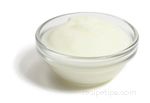 
Milk, Yogurt, and Cheese
|
Consume Foods High in Vitamin C
|
Vitamin C is an important nutrient that protects us from all types of ailments, but there is a type of cancer that vitamin C may guard against as well: stomach cancer. Specifically, studies have shown that people with high levels of vitamin C in their blood have a much better chance of fighting a strain of the H. pylori bacteria that can cause peptic ulcers, which, in turn, can lead to stomach cancer. The studies have shown that people who consume high doses of vitamin C are less likely to test positive for this type of bacterial strain.
An adequate supply of vitamin C can be achieved by eating a balanced diet. Many fruits and vegetables are good sources of vitamin C, and of course, Vitamin C tablets can be used, but vitamin tablets should not be used as a replacement for proper nutrition. Maintaining a healthy diet is always the best way to receive essential vitamins and minerals that the body needs to fight disease. |
|
Some Good Sources of Vitamin C |
|
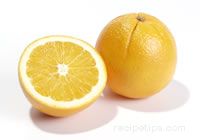  
Citrus Fruits and Citrus Juices
|
|
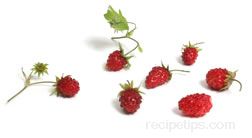 
Berries, such as Strawberries and Blueberries
|
|
 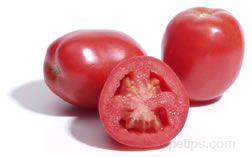
Other Fruits, such as Kiwis and Tomatoes
|
|
 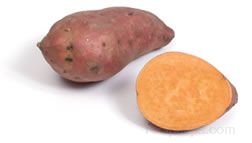
 
 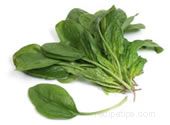
Vegetables, such as Broccoli, Sweet Potatoes,
Sweet Peppers, Cabbage, Brussels Sprouts, and Spinach
|
Eat Bananas and Root Vegetables
|
A Swedish study of 61,000 women found that among those in the study that consumed up to six bananas and/or root vegetables, such as carrots, every week, the risk of developing kidney cancer was reduced by 54% compared to those women in the study who did not follow the banana/root vegetable regiment.
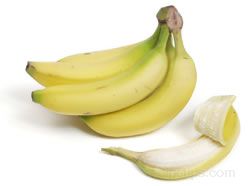 
|
Increase Your Intake of High-fiber Foods
|
A diet high in fiber is one of the best ways to guard against a number of colorectal diseases, including cancer. It is believed that fiber, specifically insoluble fiber, may prevent cancer from occurring by moving foods faster through the digestive tract, reducing the exposure of potential carcinogens to the walls of the intestines. It is also possible that the fiber dilutes potentially harmful substances within the digestive tract, lowering the risk of polyp and cancer development.
In many Western countries, especially the United States, the highly refined diet is often cited as the reason for the high incidence of colorectal cancer. With a large share of Americans eating a high-fat, high-carbohydrate diet of fast food and highly processed convenience foods, fiber intake is lacking. In countries where people rely on fruits, vegetables, whole-grains, and legumes as a large part of their diets, the incidence of colorectal cancer is much lower. This healthier high-fiber diet, coupled with the scarcity of fast food outlets and highly processed foods made with white flour, may be the reason for this low rate of colorectal cancer deaths. |
| Some of the Foods that Contain High Amounts of Insoluble Fiber |
|
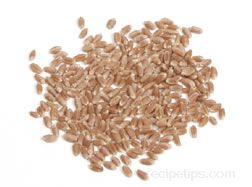 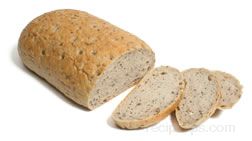
Grains and Whole-grain Bread
|
|
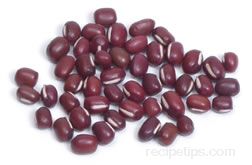 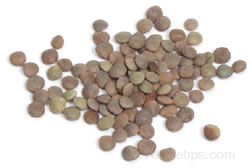
Legumes, such as Beans and Lentils
|
|
 
Fruits and Vegetables, such as Dates and Carrots
|
Some of the Foods that have Low Amounts of Insoluble Fiber
(or may contain no insoluble fiber—most of the foods are made with white flour) |
|
 
White Bread and Crackers
|
|
 
Cakes, Muffins, and Cookies
|
Don't Skip that Colonoscopy
|
Many people avoid a colonoscopy because of fear, but the majority of people who have had one will tell you that they didn't feel anything during the procedure, and that the home preparation for the colonoscopy, which is only mildly bothersome, is the worst part of the entire process. It is important for everyone over the age of 50 to have a colonoscopy to screen for colorectal cancer, which is the second leading cause of cancer related deaths in the United States. There are a number of reasons for this high incidence of colorectal cancer, but as previously stated, it is thought that one of the primary reasons is because of the lack of fiber in the highly processed foods that are so prevalent in the American diet.
The risk of colorectal cancer tends to rise with age, so this is why it is so important to schedule a colonoscopy no later than age 50; especially since there are many instances of older people who may have had no symptoms prior to the diagnosis of colon cancer. High risk individuals—especially people with a family history of colorectal cancer—should have a colonoscopy at an earlier age. People who have had precancerous polyps should have periodic colonoscopies because there is an increased risk of these types of polyps redeveloping, which in turn, may develop into cancer. Consult with your doctor as to the best course of action that should be pursued in your case. |
Drink Decaffeinated Coffee
Some studies have indicated that drinking decaffeinated coffee, specifically, two or more cups a day, may lower the occurrence of rectal cancer by as much as 50%. The reason for this may be because coffee increases bowel movements: Regularity may lower the risk of rectal cancer; however, the reason why decaffeinated coffee is more beneficial than regular coffee is unknown. |
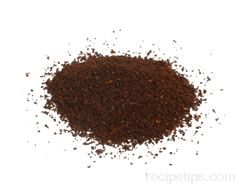 |
Don't Smoke!
| This, perhaps, is the most obvious tip for preventing cancer: don't smoke! All former smokers can attest to the difficulties they faced when quitting, so if you don't smoke now, don't start: Yes, peer pressure among young people is a powerful influence. The benefits of quitting smoking have been so thoroughly documented that they really don't need to be repeated here, but it is always worth remembering that even longtime smokers can achieve tremendous benefits from quitting. It's never too late. In fact, in many cases, within fifteen years of quitting, it's possible to revert back to a lung cancer risk that is similar to what you experienced before you started smoking. And, if you're successful in achieving your goal to quit, or if you've never smoked before, it is always important to distance yourself from secondhand smoke. One by one, states in the U. S. are enacting laws that ban smoking in all public places; so fortunately, this is becoming less of an issue every year. |
Exercise Regularly
| Yes, you've read it before and now you're reading it again—exercise is good for you. And, it's good for you in a way that most of us are not familiar with: It helps to fight cancer, especially in women—and you don't have to go to the gym every day to take advantage of this benefit. Almost any type of moderate physical activity—walking, yard work, cleaning the house—can provide this benefit if it is done at least thirty minutes a day, five days a week. It is thought that moderate exercise alters the levels of estrogen and androgens in a woman's body, which in turn, may help to guard against ovarian cancer and certain types of breast cancer. A Canadian study has indicated that regular moderate exercise may cut the risk of ovarian cancer by 30%. | |































